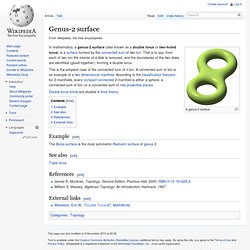

Chromoscope. TheScaleoftheUniverse. Richard Feynman - The.Character of Physical Law - Part 1 The Law of Gravitation (full version) Time Lapse View from Space, Fly Over. APOD.
Zero-point energy. Zero-point energy, also called quantum vacuum zero-point energy, is the lowest possible energy that a quantum mechanical physical system may have; it is the energy of its ground state.

All quantum mechanical systems undergo fluctuations even in their ground state and have an associated zero-point energy, a consequence of their wave-like nature. The uncertainty principle requires every physical system to have a zero-point energy greater than the minimum of its classical potential well. This results in motion even at absolute zero. For example, liquid helium does not freeze under atmospheric pressure at any temperature because of its zero-point energy. History[edit] In 1900, Max Planck derived the formula for the energy of a single energy radiator, e.g., a vibrating atomic unit:[5] where is Planck's constant, is the frequency, k is Boltzmann's constant, and T is the absolute temperature.
According to this expression, an atomic system at absolute zero retains an energy of ½hν. Varieties[edit] . Space. NASA. Sistema Solar. Astronomy. Hubble Heritage Gallery. SpaceRip Top Videos. Curious About Astronomy? Genus-2 surface. A genus-2 surface.

In mathematics, a genus-2 surface (also known as a double torus or two-holed torus) is a surface formed by the connected sum of two tori. That is to say, from each of two tori the interior of a disk is removed, and the boundaries of the two disks are identified (glued together), forming a double torus. Double torus knots are studied in knot theory. Example[edit] See also[edit] Triple torus References[edit] James R. External links[edit] Weisstein, Eric W., "Double Torus", MathWorld. Torus. A torus In geometry, a torus (pl. tori) is a surface of revolution generated by revolving a circle in three-dimensional space about an axis coplanar with the circle.

If the axis of revolution does not touch the circle, the surface has a ring shape and is called a ring torus or simply torus if the ring shape is implicit. In topology, a ring torus is homeomorphic to the Cartesian product of two circles: S1 × S1, and the latter is taken to be the definition in that context. It is a compact 2-manifold of genus 1. The ring torus is one way to embed this space into three-dimensional Euclidean space, but another way to do this is the Cartesian product of the embedding of S1 in the plane. The word torus comes from the Latin word meaning cushion.[1] Gliese 581. Gliese 581 has been the subject of a "huge amount of attention" in the quest to discover the first habitable extrasolar planet; first for c, and then d and g.[12] The star first gained attention after Gliese 581 c, the first low-mass extrasolar planet found near a habitable zone, was discovered in April 2007.

It has since been shown that under known terrestrial planet climate models, Gliese 581 c is likely to have a runaway greenhouse effect, and hence is probably too hot to be habitable, analogous to Venus. A subsequently proposed planet Gliese 581 d, may be just inside or just outside the outer boundary of the habitable zone (depending in part on the greenhouse properties of its atmosphere), analogous to Mars.[12][13] Gliese 581 e was announced in April 2009;[14][15] this was at the time the least-massive planet found around a normal star. On 27 November 2012, the European Space Agency announced a comet belt, with at least ten times as many comets as the Solar system. See also[edit] Photopic Sky Survey. Space.com.